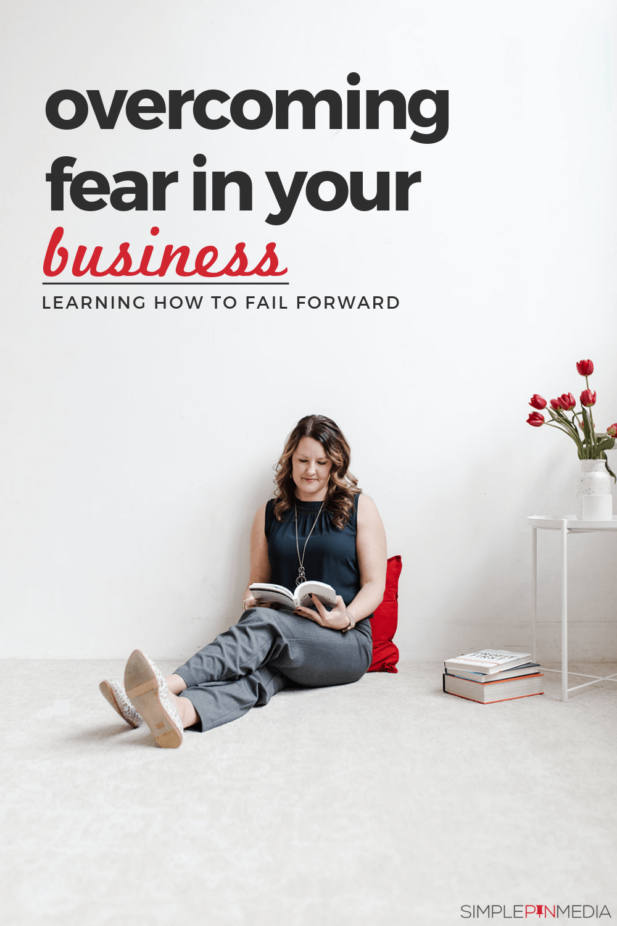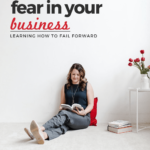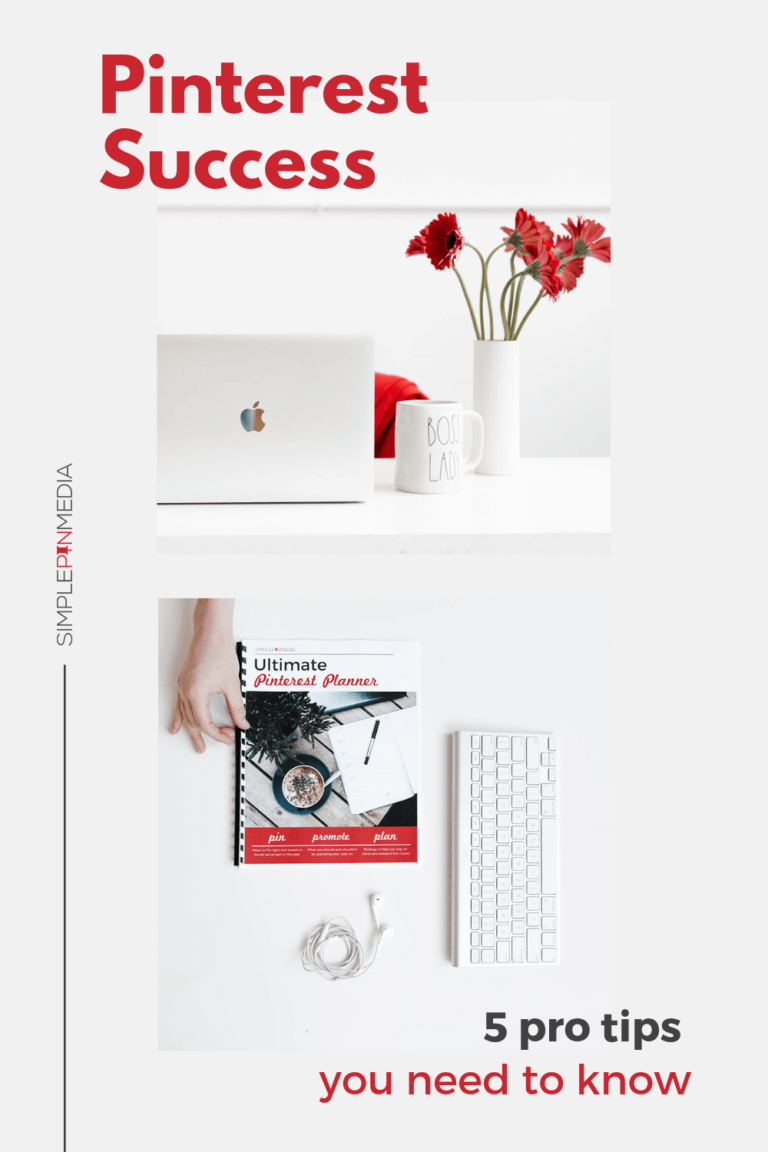Overcoming fear in your business is a critical step to becoming a successful entrepreneur. Today, we’re drilling down to examine our most common fears and learn how to kick them to the curb.
Just a heads up – we won’t be talking about Pinterest this week, so if you were really looking forward to getting some tips, I recommend you go back and listen to the Best Pinterest Marketing Practices for 2019.
One of the biggest hurdles in business is fear, and fear holds us back.
In today’s episode, I’m chatting with my friend, Ruth Soukup. Ruth joined us back in episode 126 to talk about how to change your blogging mindset, and that episode got everyone talking about how they were going to reevaluate their mindset and time. She’s back today to continue the conversation and to talk about her new book, Do It Scared.

This post contains affiliate links, which means if you make a purchase through these links, I may receive a small commission at no extra cost to you. Click here to read my full disclosure policy.
I was able to read an advanced copy of Do It Scared, and as someone who deals with the fear of failure, it made me hesitate and even frustrated me a little, which we talk about in this episode.
After reading through Do It Scared and learning about the ways I can challenge those fears and turn them into something positive, I was so inspired. I love this line from the book that says:
We’re not called to balance, we’re called to purpose. — Ruth Soukup
How Do It Scared Came to Be
Ruth has dealt with fear her entire life.
There have been so many times when she felt like she has no idea what she’s doing, and so, “do it scared” became her mantra for most of her adult life. She went through a terrible depression in her early 20’s and the mantra helped her to just take the next step.
After Ruth started her company, Do It Scared became one of the company’s core values.
Over and over, Ruth has had people come to her and say, “I feel like I’m stuck, watching my life go by.” It made Ruth so curious about fear and the role it plays in our lives. She wanted to know if there was a way to overcome it and if that would look the same for everyone.
All of Ruth’s questions produced a snowball effect. Pretty soon, her company had surveyed over 4,000 people on the role fear plays in their lives. It was so much data that she hired a whole team of researchers to help her sift through it all.
Researching Fear: The Study Results
Through all the research, the biggest discovery she made was that not all fear is created equal. The way fear manifests itself is different for each person.
Ruth’s team uncovered seven different fear archetypes. They took all the information they had and created a fear assessment. Three thousand people have taken the beta version of this assessment and it’s been reviewed by psychologists, as well.
The ability to help people overcome fear in their lives and businesses is something that Ruth felt called to do. Do It Scared covers the fear archetypes and then helps you find out how to overcome it.
The 7 Fear Archetypes
The 7 Fear Archetypes uncovered by the research process include:
• Procrastinator/Perfectionist – their deepest fear is making a mistake. They get stuck in “analysis paralysis,” not wanting to move forward so they don’t mess up. This is the most common of all the fear archetypes.
• Rule Follower – they suffer from an unhealthy fear of authority. They get nervous about doing anything that they perceive is “not allowed.” They think someone will get mad at them for not doing exactly what is supposed to be done.
• People Pleaser – they have a fear of being judged. They don’t want to make mistakes because of what other people will think. They think a lot about what other people are saying and thinking about them. They are nervous about looking silly or stupid.
• Outcast – this is the most ironic of all the fear archetypes. On the outside, they appear to be fearless, but their fear is of rejection. Because of this, they preemptively reject other people. A lot of entrepreneurs are Outcasts.
• Self-Doubter – they have a fear of not being capable. They have a lack of confidence and self-esteem. They have a lot of negative talk and criticism that takes place in their brain about themselves. They are hyper-critical of themselves and the people around them.
• Excuse-Maker/Blame Shifter – they are very afraid of being blamed or held responsible. They are the friend who never wants to pick the place you go to eat just in case it turns out to be bad. They can rationalize everything.
• Pessimist – they fear pain or adversity. This comes from the pessimist having experienced a lot of pain, adversity, or trauma in their lives. They get to a place where they say “why should I even bother? Life’s not fair.”
Overcoming Fear in Your Business: Learning to Do It Scared
Ruth’s Primary Archetype and Pushing Past Her Fear
Ruth’s number one fear archetype is the Outcast. She scores super high on the Outcast (90%!) and super low on the rest of the types. Her second result after the Outcast is the People Pleaser. She wasn’t surprised by her results.
After taking the test and learning more about her archetypes, Ruth has noticed how they show up in her life so much more. A lot of the time our fear exists in our lives and we aren’t able to identify what it is. We just assume our feelings are something that everyone is experiencing.
Once you are able to pinpoint your primary fear archetype and understand how the patterns are playing out in your life, you can make a conscious effort to push past those fears.
Ruth has a group of friends, (she calls them “The Truth Club”) who challenged her to reach out to 20 people and give them a pitch that would probably be rejected. They said, “If you can reach out to those 20 people and handle the rejection, it’ll cure you of this fear you have.”
Ruth did it and it has made a huge difference. Out of the 20 people, two or three said yes. Now she has a desire to pitch her ideas to people who could possibly reject her. And her friends have been supportive and encouraging through it all.
Kate’s Fear Archetype
I am a Rule Follower. Goal setting is hard for me because I want to always be realistic. I have to have a plan for every goal I set.
For EBA students, the ones who are Rule Followers are some of the most successful students because they follow every step of the program.
I work great with a coach because it gives me a path, and I can meet goals every time.
When you can understand what motivates you, you can put the proper safeguards and catalysts in place to get you where you need to be.
If you’re not aware of your fears and you just accept things at face value, you won’t be able to make good decisions. You need to have the ability to discern and to ask the right questions.
I can get so caught up in “getting it right” that I forget about actually helping people and serving them. I’m giving a keynote about daring to fail in about a month. Giving this keynote about failure is the same challenge for me as reaching out to those 20 people was for Ruth.
Once we learn to overcome the fear and push past it, we are able to really use our creativity and our skills.

Do It Scared
If there is anybody that needs the Do It Scared book, it is someone who is trying to create a business, become an entrepreneur, or get a message out into the world, because there is so much fear involved in those things.
Ruth’s desire is for the book to change lives and give hope to anyone trying to make a business work. The book releases on May 21st and there are some amazing book bonuses on her website.
You can take the Fear Assessment for free, which will give you your top archetype. If you want the full assessment report that shows you how you score on all the types, your top three, and how they all work together, you can get that for free as a bonus when you preorder the book.
When you preorder Do It Scared, you’ll also get a 2-month free trial membership to the Doing It Scared membership community and you’ll get the Do It Scared Workbook.
Go take the Fear Assessment test and comment on this post and let us know what type you are and what steps you’ll be taking to move forward in your business. We’re so interested in learning more about you.
For Further Reading/Listening:
- Creating Business Core Values: The Simple Pin Story
- Changing Your Blogging Mindset
- Balancing Life, Business, and Pinterest
- The Best Books for Online Entrepreneurs
Time Stamp:
3:48 – How Do It Scared Came to Be
6:44 – Researching Fear
13:41 – The 7 Fear Archetypes
13:59 – The Procrastinator/Perfectionist
14:22 – The Rule Follower
14:57 – The People Pleaser
16:06 – The Outcast
16:51 – The Self-Doubter
17:39 – The Excuse-Maker/Blame Shifter
18:24 – The Pessimist
19:22 – Ruth’s Fear Archetype and Pushing Past Her Fear
28:32 – Kate’s Fear Archetype
39:53 – Do It Scared








Interesting topic, and it’s cool that you’re delving into business topics more.
For myself, over the years I’d heard a lot of “fear of success” theories until I realized that they just didn’t apply to me. My delays in success were actually due to being the *opposite* of a rule follower! So I had wasted a lot of money on step-by-step courses that I just would not follow.
Not surprisingly, I came out “Outcast” at 43%. However I feel the “negatives” assigned to this type are simply my traits of being an extreme introvert. I DO want to go it alone and by now, I’ve happily created a 6-figure business that doesn’t require team members or networking.
The important thing is to go with your strengths and passions! And of course, be willing to fail.
Thanks for your perspective on that fear archetype Louise!
I chuckled when I received “Procrastinator” as my main archetype. What surprised me was that it was ONLY 60%! I never have thought of myself as a perfectionist, but I do see how being afraid of making a mistake prevents me from pulling the trigger on projects.
Yes, an it’s so common! Loving that you took the quiz
Just discovered your podcast and love this topic! Doing my own “scared” today and listening was just the shot in the arm I needed. I am a procrastinator/perfectionist, not that I needed a test to tell me! 🙂 Can’t wait to read the book!
Another video that helped was Jia Jiang’s “What I learned from 100 Days of Rejection”. https://www.youtube.com/watch?v=-vZXgApsPCQ
Learning to lean into the No and asking questions rather than just shutting down and running away was a big game changer for me. It was a way to change the whole conversation.
Thank you for this recommendation Lynn. It’s all about identifying the tendencies we have that aren’t serving us in a positive way and making those hard changes